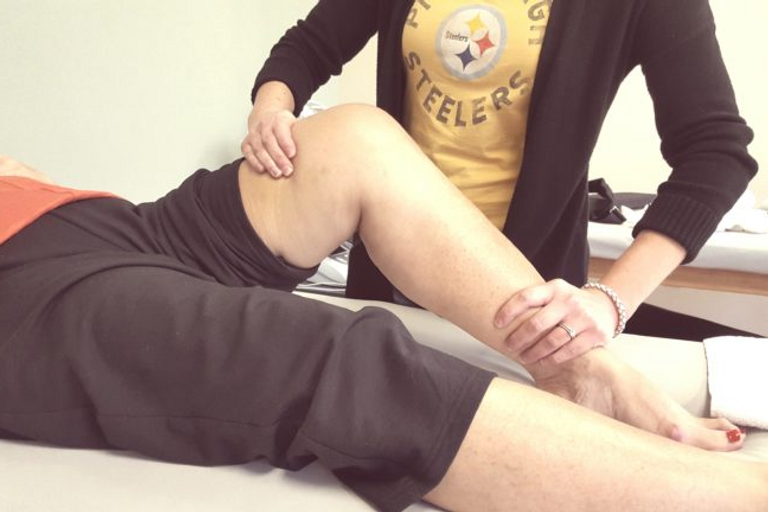Rehabbing Your Total Knee Replacement
 Krissy Austin
Krissy Austin

You’ve had a total knee replacement. You've finished home therapy. What’s next? Most likely, your surgeon ordered you another round of physical therapy. This time it involves you traveling to an outpatient clinic where you will pick up right where you left off. Let's just say it's time to start "fine tuning things." Read on to find out what you can expect during the next 2 to 3 months of outpatient rehab following your total knee replacement.
Let's get you walking better.
You've most likely developed compensations prior to and following your surgery. But really, who wouldn't? There are many reasons that you are having difficulty using your new knee: pain, swelling, and fear, to name a few. Correcting your gait is a top priority and will need to be addressed early in order for you to return to your prior level of functioning. Many times this involves weaning you from using an assistive device (cane, walker, crutches) if you did not require additional support prior to your surgery or working on improving the quality of your gait with or without using an assistive device.
Yes, you have to bend it (and straighten it).
Let's get that range of motion back! You will be taught many different ways to bend and straighten your knee, and yes, you are expected to repeat these at home throughout the day. It will be uncomfortable and at times somewhat painful, but in the long run it is crucial for helping you return to functional daily activities such as transferring in or out of car, walking up or down the steps, and returning to recreational activities or sports. This takes me to my next point…
We will bend and straighten your knee for you.
No matter how far you think you are bending and straightening that knee, in the eyes of a physical therapist there's always a few more degrees to be had. But no one patient is the same. This means that there are no set range of motion numbers (degrees) that every single patient must achieve. Following your evaluation, your PT will have a goal in mind for your range of motion. Of course this will be discussed with you and will take into consideration your personal goals and expectations.
Strengthen it.
It’s probably no surprise to you, but you lost a good amount of strength specifically in the surgical leg prior to and following your surgery. Your home physical therapist got you started on a post-op strengthening program, and now it’s time to start building on to it.
You are encouraged to give us feedback.
Is your home exercise program getting easy? Is there a specific activity or goal that has yet to be addressed during your rehab? Are you having difficulty completing your home exercises because you are in too much pain the day after therapy? As a patient, you should be involved in every aspect of your recovery. It is important that you give your PT feedback about how you think you are progressing.
Don't miss out on helpful information from the staff at Restorations PT! Sign up for our quarterly newsletter today by entering your email at the bottom, right of our site.
